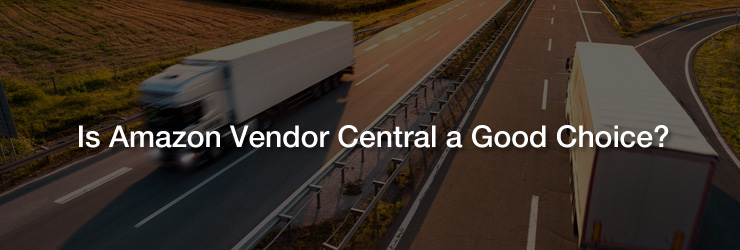Is Amazon Vendor Central a good choice?

As a brand owner, a common choice for you is to sell on Amazon as a third-party seller. That means you manage your Amazon store via Seller Central and have to operate most of the business by yourself. However, there is actually another option for you: become Amazon first-party seller and let Amazon sell your products for you!
What is Amazon first-party seller?
If you authorize Amazon to sell your products, then you will become their partner. You will supply your products to Amazon in bulk and will use Vendor Central instead of Seller Central. Once you become an Amazon Vendor, Amazon will act as the bridge between you and your customers and manage a big portion of your business for you. For instance, they will be in charge of pricing and payment.
How to become an Amazon first-party seller?
The most ideal scenario is that you already own a reputable brand and have built a connection with Amazon’s procurement staff. Otherwise, you’ll have to wait for them to reach out to you. What usually happens is that your sales on Amazon continues to increase at a remarkable rate and draws an interest from Amazon, at which time they will contact and try to recruit you to become a first-party seller. Or, if you have not been contacted by Amazon to become a first-party seller, you can also try to register in Amazon’s Vendor Express but you still have to wait for Amazon’s approval. Oftentimes, they will ask that you send over several samples first before they decide if they want to sell your products.
If you are considering to switch from Amazon Seller Central to Amazon Vendor Central, the following are 5 aspects that you should evaluate:
1. Pricing, product launch and customer service
Amazon will help you release the products, promote them and take care of customer service. However, the downside is that you cannot control the prices and the ability to offer larger discount.
Amazon third-party sellers have to handle pricing on their own. Based on 6%-15% fees that Amazon charges for different product categories, they are able to estimate the profit and determine the pricing accordingly. The advantage for them is that they have more thorough understanding of their buyers as they own the customers data. As such, they can keep improving their products to meet customer demands.
2. Inventory management and delivery
Once you become Amazon’s first-party seller, they will purchase products from you, supervise and maintain the inventory level, and take responsibility of shipping. On the other hand, third-party sellers have to take care of all these tasks on their own unless they use FBA.
3. Payment
The payment cycle for Amazon first-party seller is 90 days, which might cause cash flow issues for businesses with small capital, especially before or after special holidays. If you are willing to offer a 1% or 2% discount to Amazon’s procurement, then Amazon will shorten your payment cycle to 60 days or 30 days. Nevertheless, it is still longer than the payment cycle for Amazon third-party sellers, which is only 14 days.
4. Marketing
By paying additional fees to Amazon, Amazon first-party sellers can enjoy extra marketing resources compared to third-party sellers. For instance, first-party sellers can optimize the product webpage, add additional pictures, detailed description and even videos to make products more eye-catching. They can also take advantage of Amazon Vine, which invites trusted reviewers on Amazon to post opinions about new and pre-release items to help their fellow customers make informed purchase decisions and also raise their review ratings. However, first-party sellers are still not able to influence the reviews to be positive.
5. Sales
Generally, Amazon have better sales performance in low-price, big-volume home-used products, which indicates that this category would be a good choice for first-party sellers to supply to Amazon. However, in terms of most other products, there’s no significant evidence that Amazon sell them better than third-party sellers. In other words, being Amazon first-party seller doesn’t always guarantee a boost of sales.
In summary, being Amazon’s first-party seller is more time-saving than being third-party seller. However, from a long-term perspective, it could be less beneficial to your brand. For sellers who have the ability to operate business well on Amazon and are willing to spend time and effort on it, being Amazon’s third -party seller should still be a better choice.








